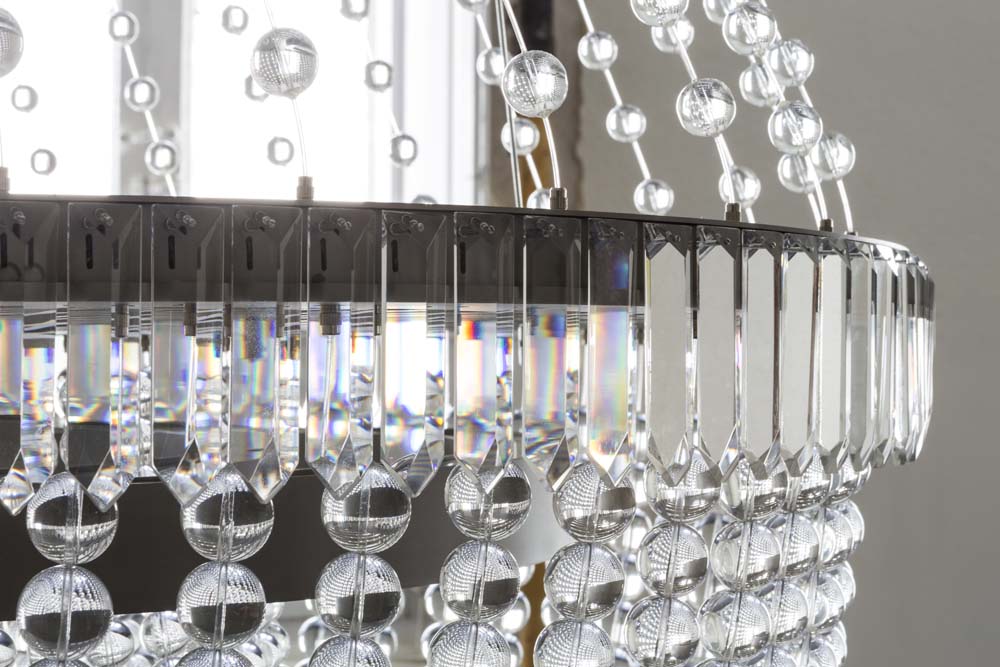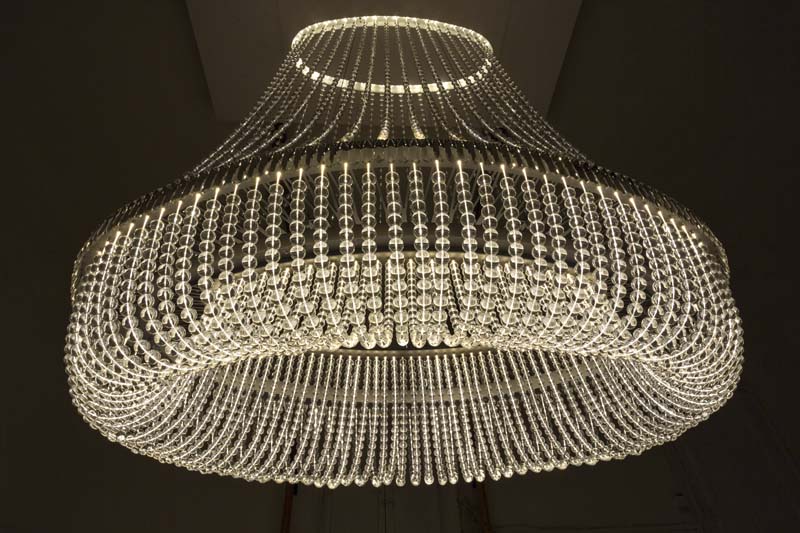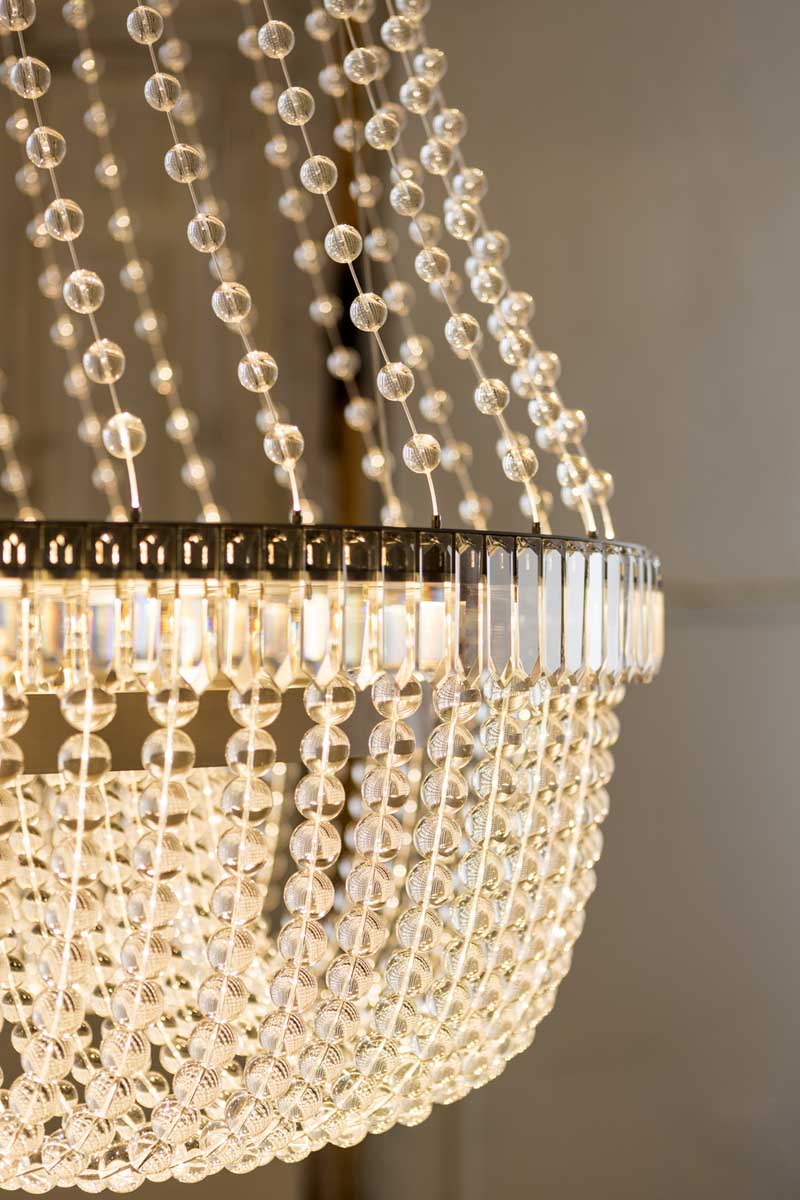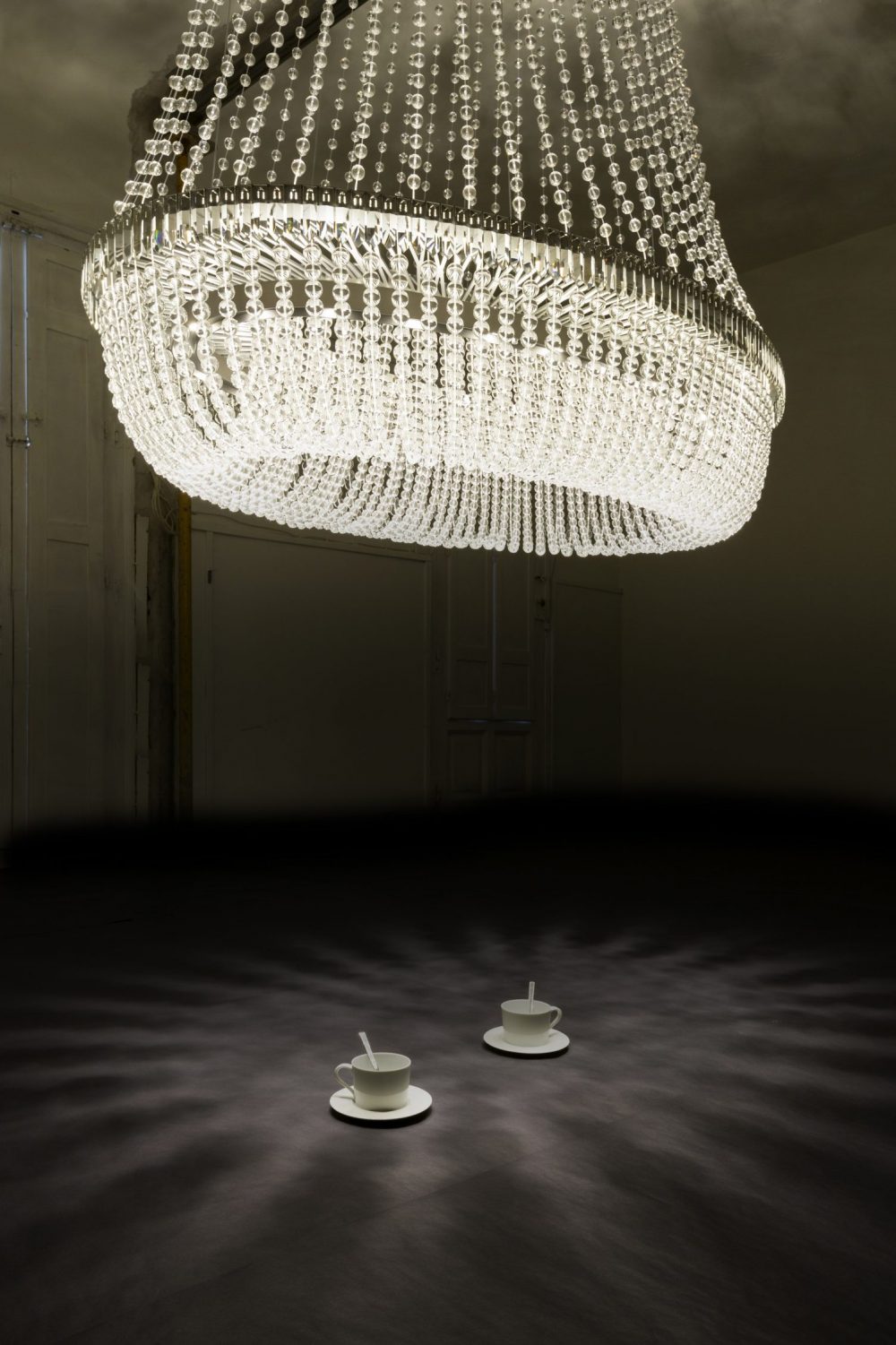Begemot Chandelier
Begemot Chandelier
Prototipo para un piso en Moscú 2015 Adam Bresnick, Ignacio Valero, Miguel Peña, Antonio Romeo, María Montoya - ANEVA
2015
ADAM BRESNICK, IGNACIO VALERO, MIGUEL PEÑA, ANTONIO ROMEO, ANEVA
MOSCOW/MADRID
The History:
The author Mikhail Bulgakov first got to know Moscow when visiting his friends and family that lived on and around Ulitsa Prechistenka. Many of the protagonists of his novels live there or nearby.
The building at number 13 was built in 1912 and a cousin of the jeweller Fabergé lived on the fifth floor. In the author’s texts this building was the inspiration for the home of Anna
Frantsevna Fugeret in The Master and Margarita where the scene when the talking cat Behemoth swings from the chandelier. The author used its entrance and marble staircase as inspiration for the first floor of ‘the Kalabukhov House’ (the residence of Professor Preobrazhensky).
Our chandelier is designed with these stories in mind, and it will illuminate the same fifth floor dining room once home the famous jeweller’s cousin.
Imperial in its form and minimalist in its details, a myriad of smooth Austrian crystal spheres are strung on LED lit fibre optics. When illuminated, its details shimmer, and the spheres glitter like tears on cat whiskers.
About the shape:
19th century neoclassical lamps established a new typology using chains of catenaries strung with drops, rosettes or pendalogues, which hung from an outer hoop and gathered to a centre bowl. The view from below is a lovely continuous surface formed by individual pieces of glass. Radically different than earlier and later designs based on individual radial arms, these natural curves are kin to women’s fashion of the day, which explored fabric’s natural drape for the first time since antiquity.
This definition of continuous surfaces clearly relates to contemporary discourse, especially in terms of architecture and design generated three dimensionally. The chandelier design had to overcome 3 formal and technical objectives:
Firstly, by eliminating the central axis both form and construction are activated by an expressive empty space. Despite its innovative form the historical typology maintains a central structure from which the catenaries are strung. The new iteration integrates a horizontal structure supported by a set of cables along its perimeter.
Secondly using the ever more reduced scale of led technologies light is incorporated inside the chandelier, even the power source forming one of the supporting cables.
Finally, as an oval in plan the chandelier establishes directionality; the geometry fomenting a multiplicity of distinct views and angles.
The Materials:
The chandelier is colourless, all materials transparent or reflective: the basic material of the lamp is the repeated image of the space it occupies. This play between surface and reflection works equally well by day or night.
Threaded on fibre optics, the crystal spheres emit light whose source is at the beginning and end of each strand. The lamp thus casts light point by point, spheres of light.
The Light:
Light is refracted and reflected by the crystal pieces onto the walls of the space in which the chandelier is located. A lovely pattern of light and shadow is thus formed.
The room’s surfaces form part of the chandelier itself: its image repeated with in each glass, and the walls and floor marked by its pattern.
This relation between container and contained is the most interesting aspect of the design: the space itself is repeated within the lamp while its light transforms the same space.
The Technology:
With 276 high and medium emission leds and with 180m of fibre optics, the chandelier is a technologically complex artefact. Laser cut, its stainless steel frame was then artistically blasted by a digitally controlled process of micro-particles. The high fidelity electronics underline the artisan quality of the 4692 crystal pieces creating a one of a kind piece.Meritxell Arjalaguer



